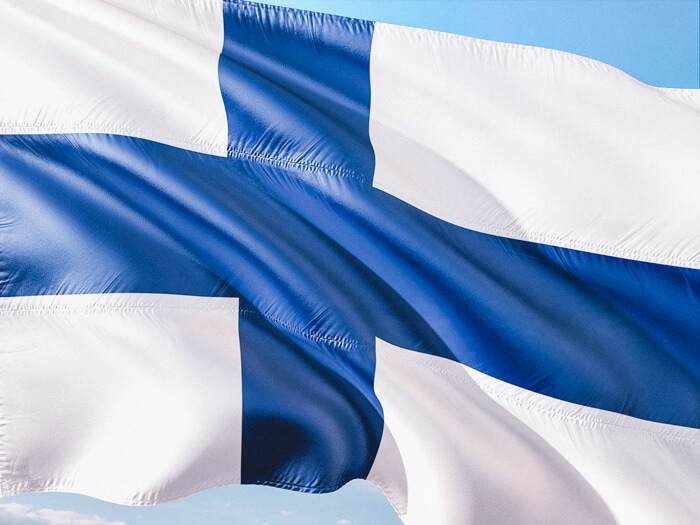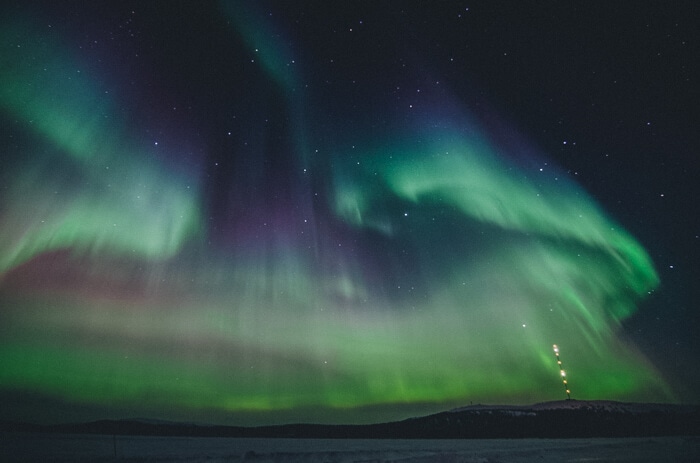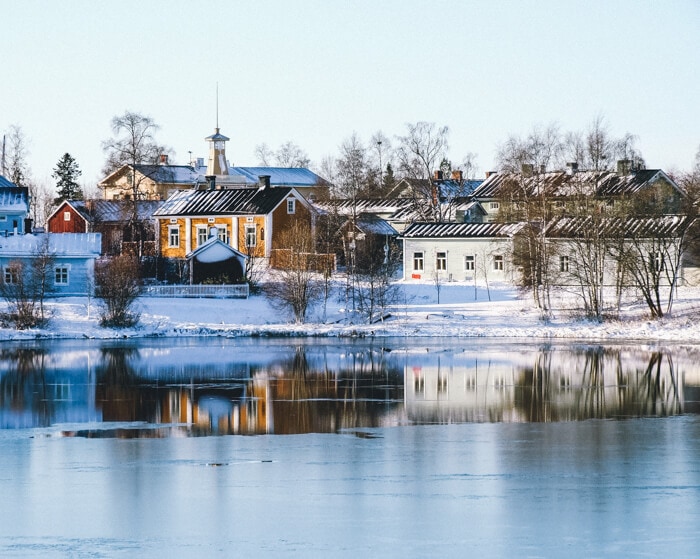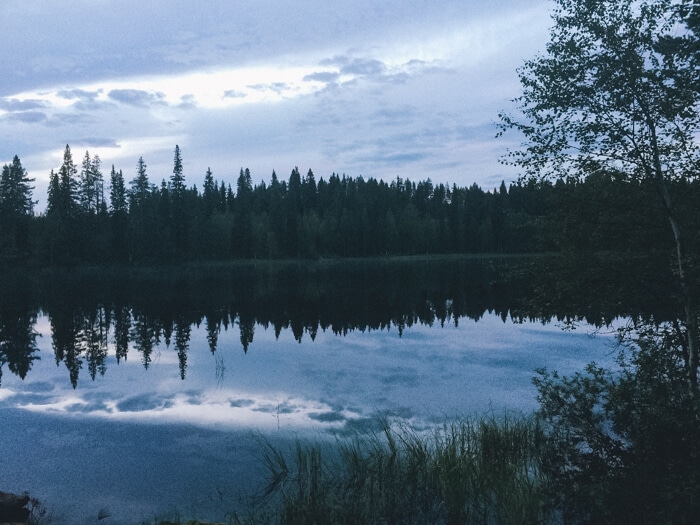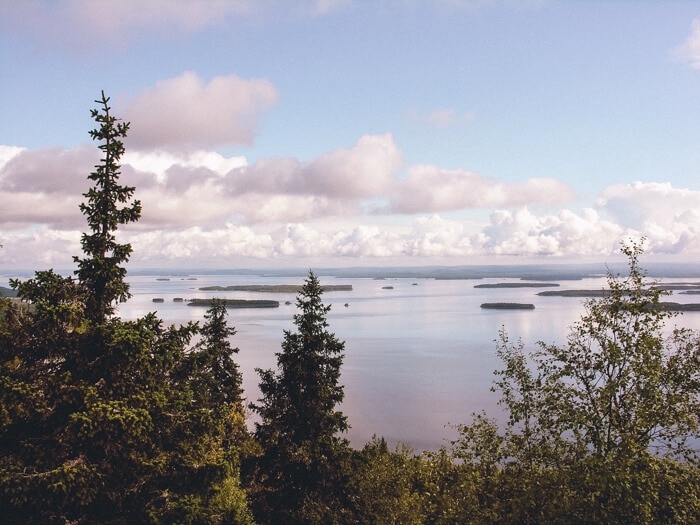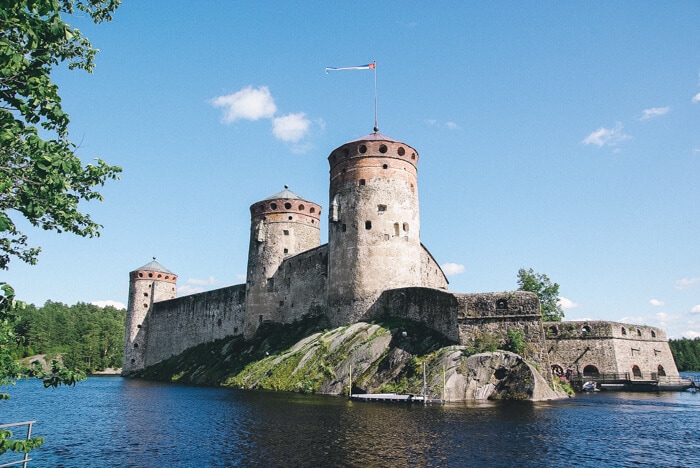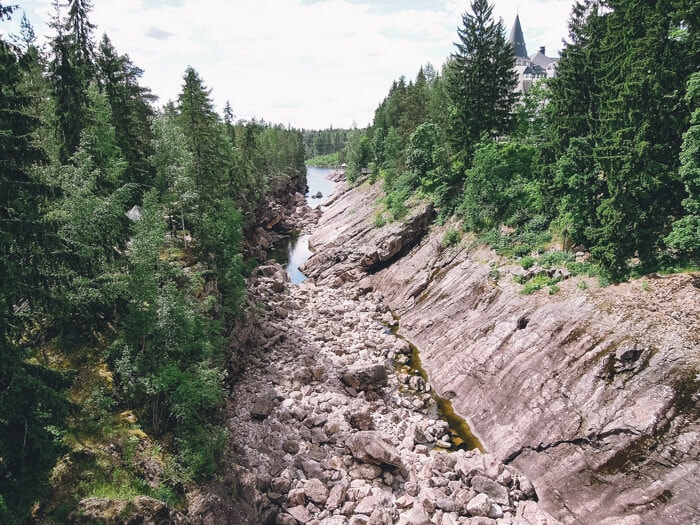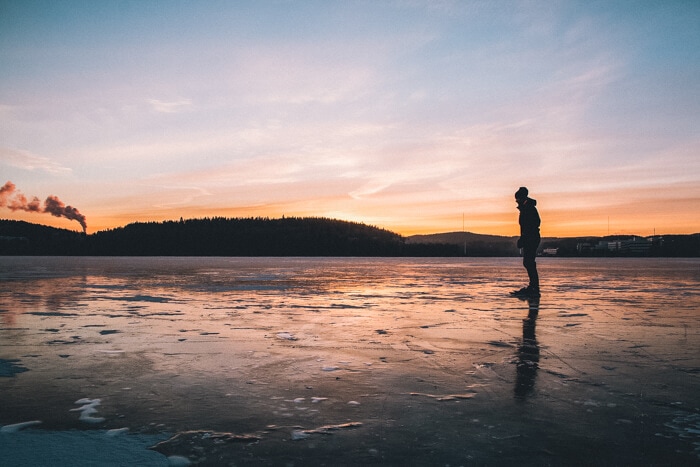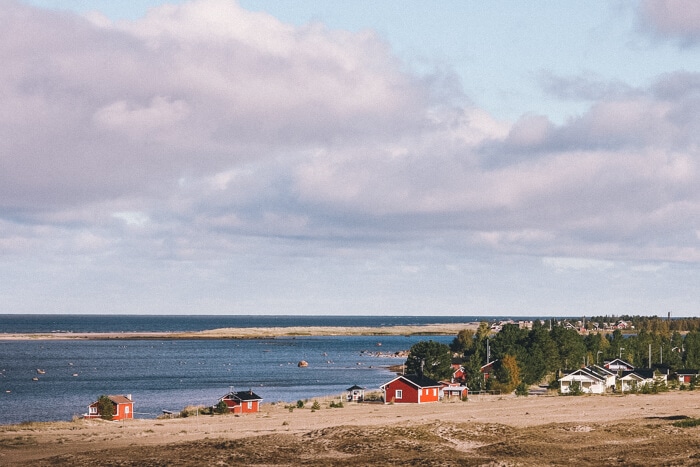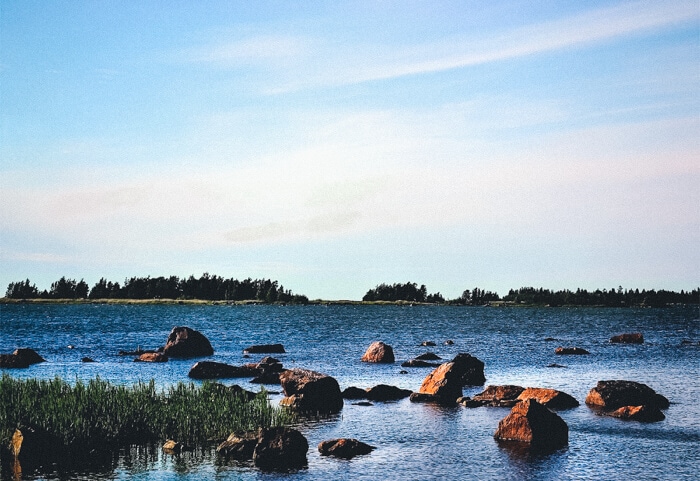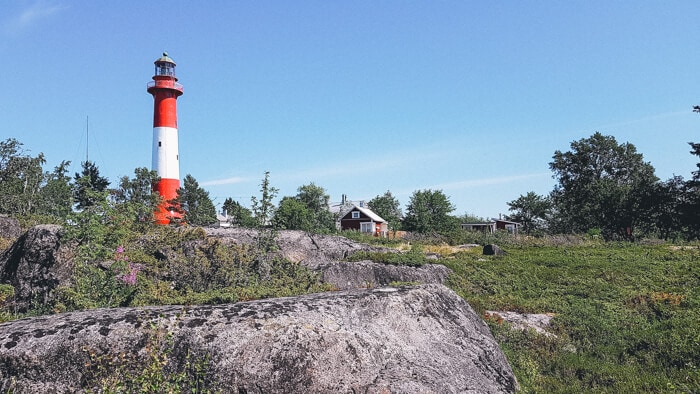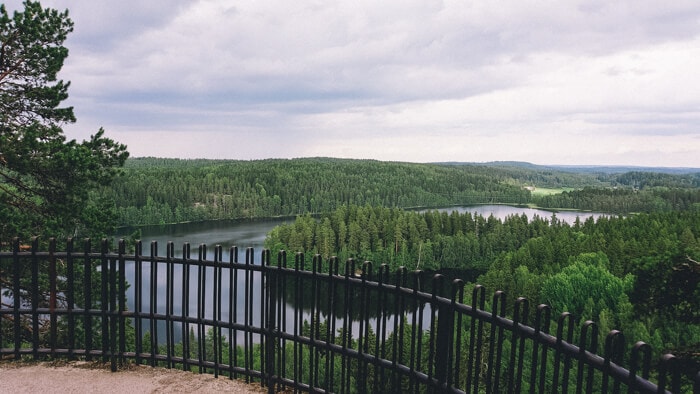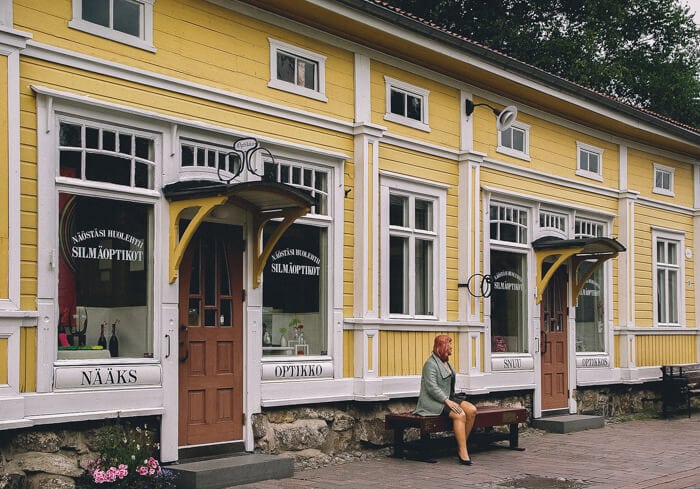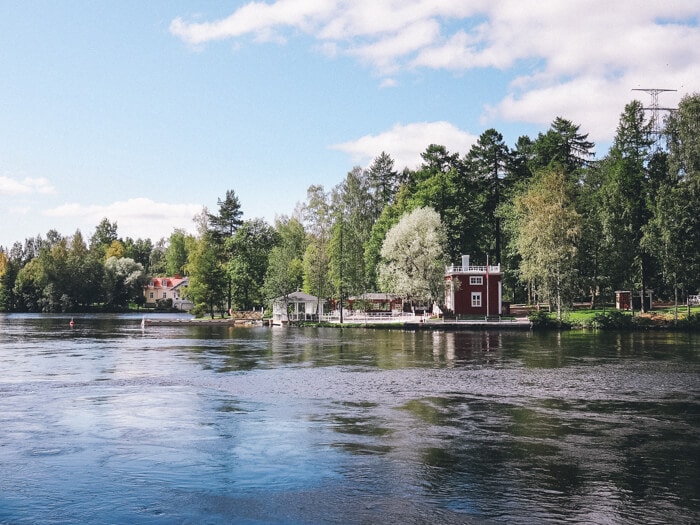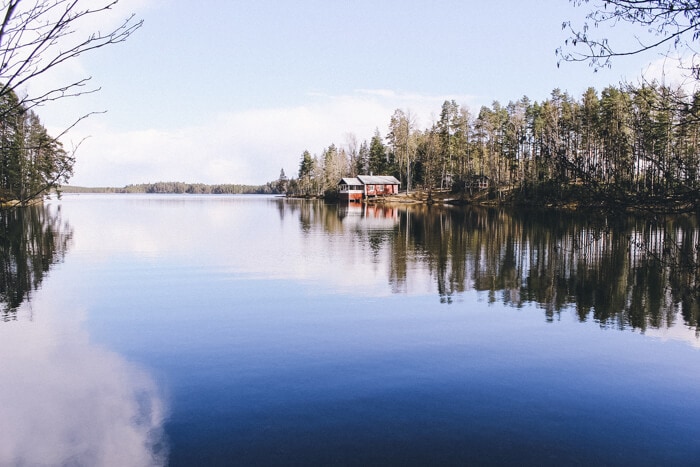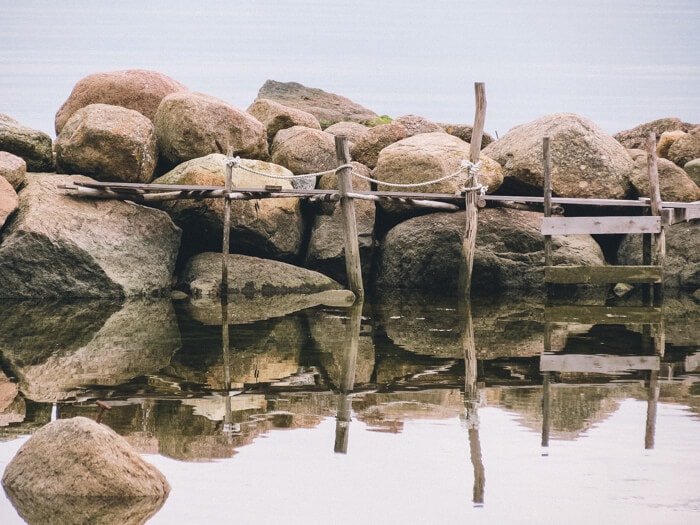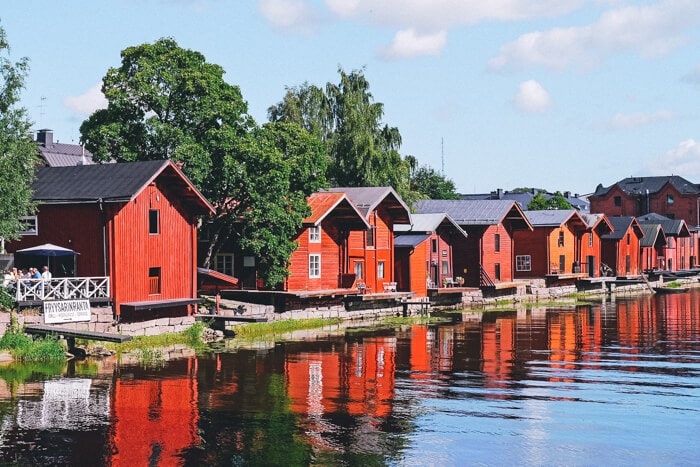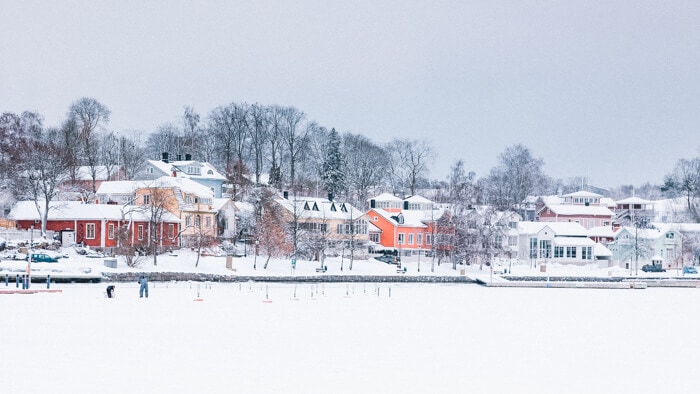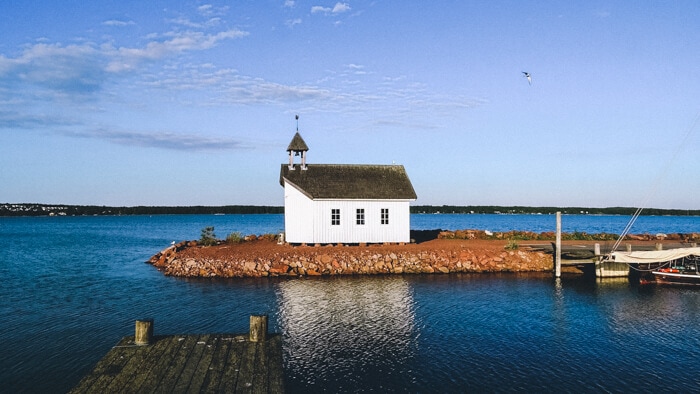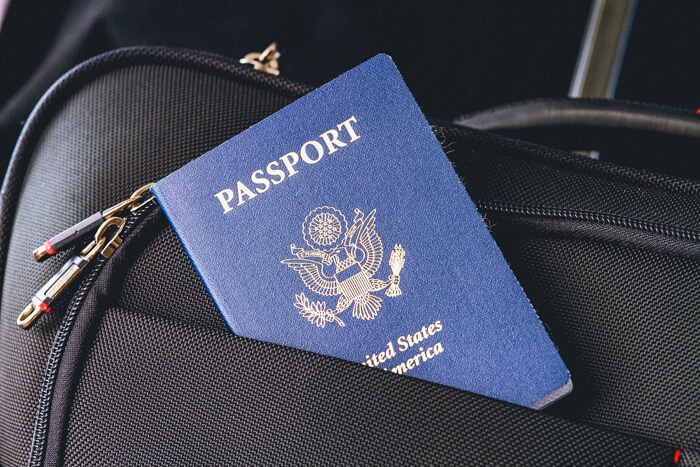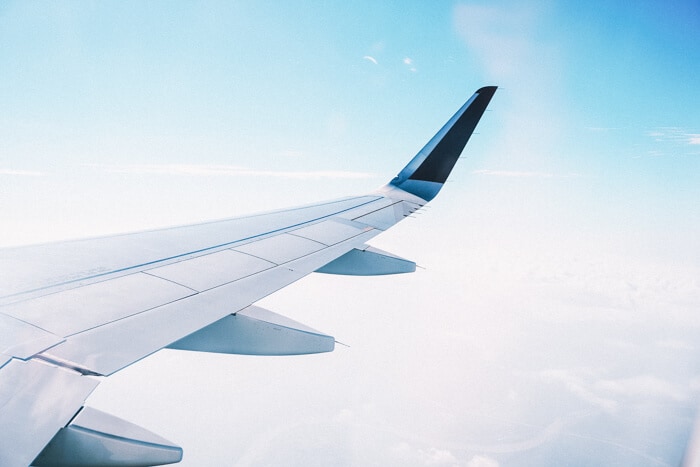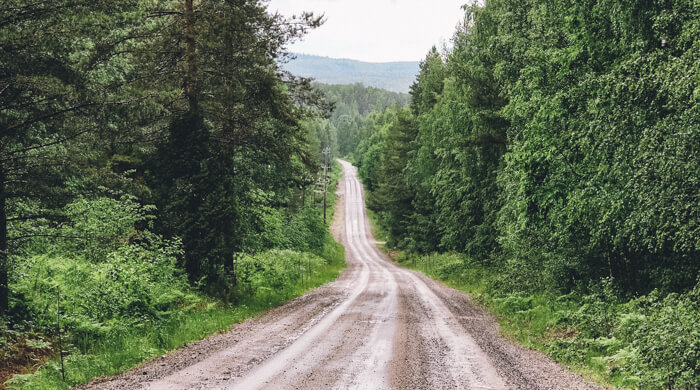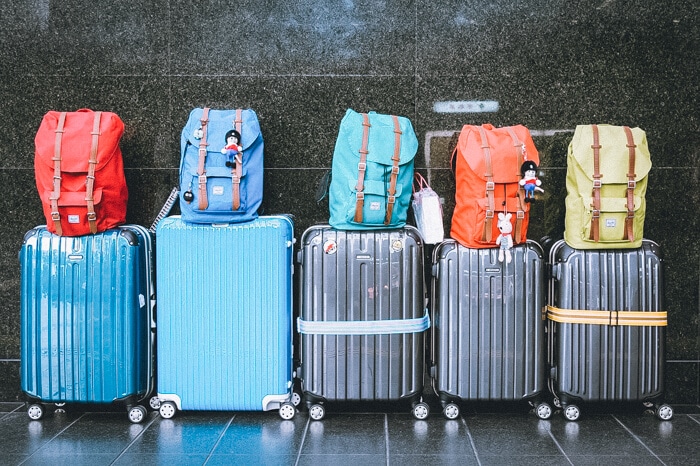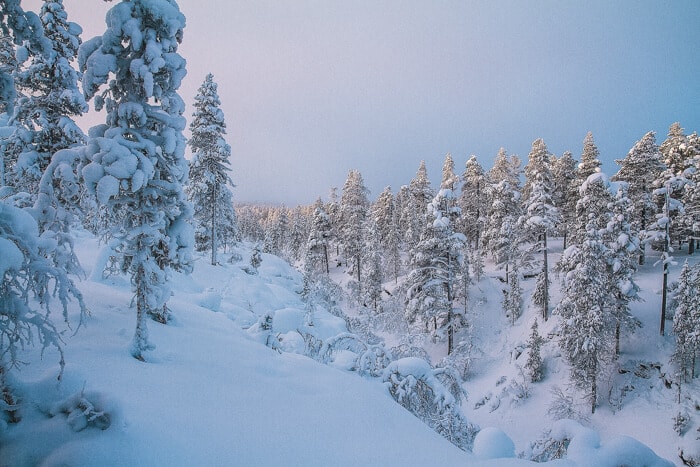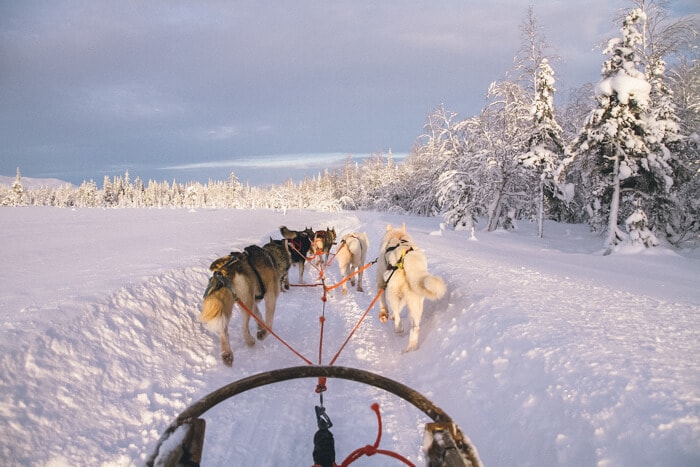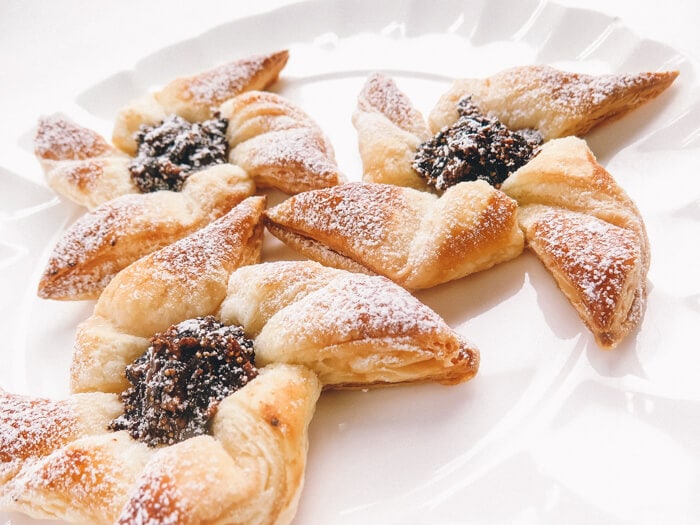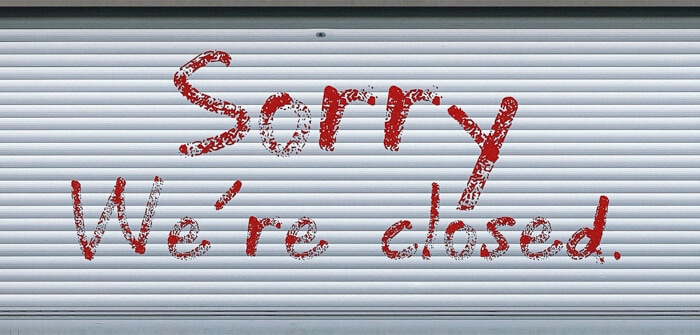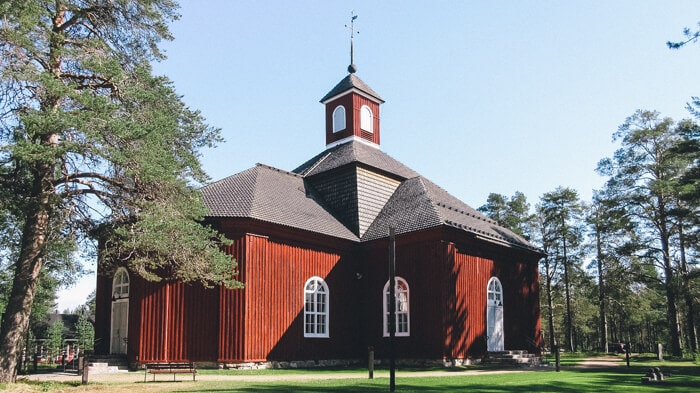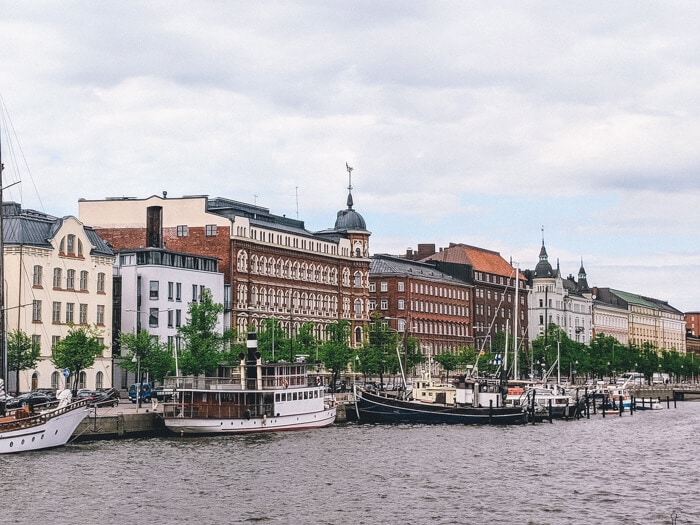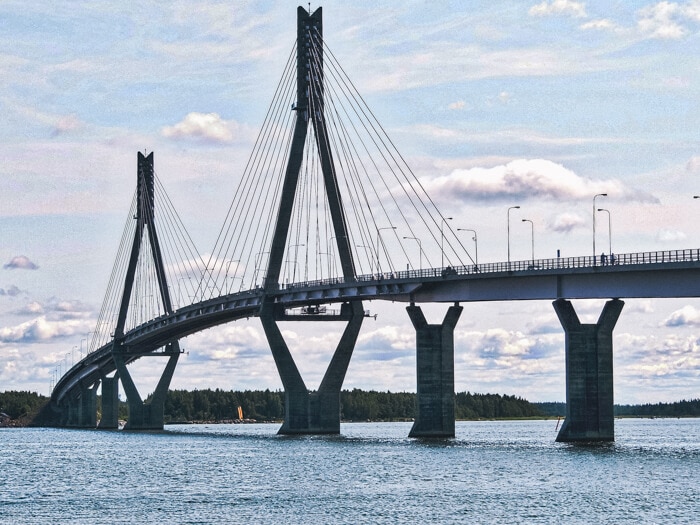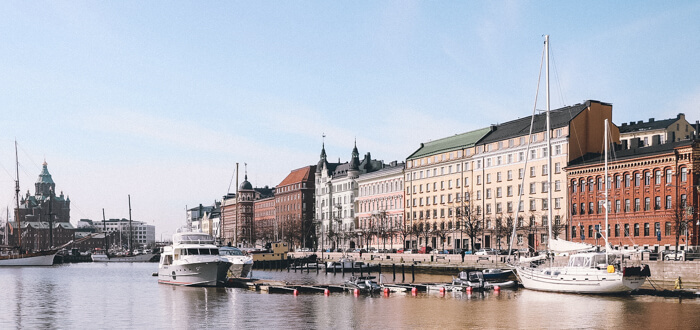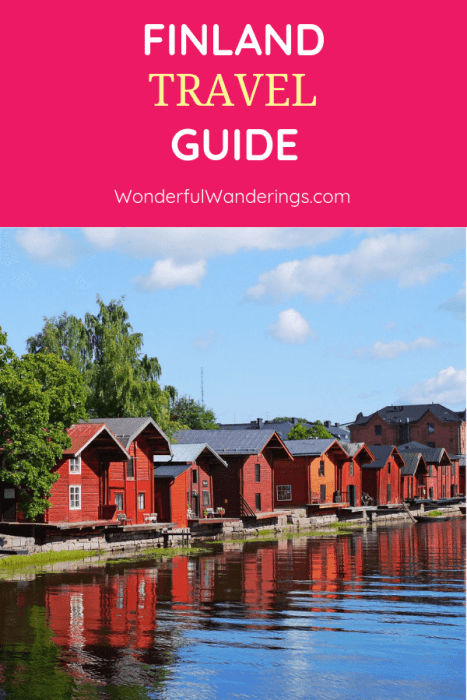Planning a trip to Finland? Great! This Finland Holidays Guide shows you you where to go, how to get there, what to eat there and much more. Check it out!
Finland, officially the Republic of Finland, is located in northern Europe, bordering Norway to the north, Sweden to the northwest and Russia to the east. The Nordic country is Europe’s eight largest country and the northernmost country in the European Union. It’s also a member of the United Nations, the Organisation for Economic Co-operation and Development (OECD) and the NATO Partnership for Peace.
The world’s happiest country has more forest per square mile than any other country in Europe. Known for its natural beauty, undisturbed wilderness and the chance to see the Northern Lights in Finnish Lapland, Finland is a fantastic holiday destination.
This guide is meant to help you plan your own Finland holidays. Check it out for information on the different areas of Finland as well as how to get there, how to travel around, things to do in Finland, and more.
Contents
- Finland holidays: quick facts
- Finland provinces/states
- 1. Lapland
- 2. Northern Ostrobothnia
- 3. Kainuu
- 4. North Karelia
- 5. Northern Savonia
- 6. Southern Savonia
- 7. South Karelia
- 8. Central Finland
- 9. Southern Ostrobothnia
- 10. Ostrobothnia
- 11. Central Ostrobothnia
- 12. Pirkanmaa
- 13. Satakunta
- 14. Päijänne Tavastia
- 15. Tavastia Proper
- 16. Kymenlaakso
- 17. Uusimaa
- 18. Southwest Finland
- 19. Åland Islands
- How to travel to Finland
- How to travel around Finland
- What to pack for Finland
- The best time to visit Finland
- What to eat in Finland
- Famous events in Finland
- Public holidays in Finland
- Cultural customs to be aware of in Finland
- Where to stay in Finland
- Don’t forget travel insurance
- Basic phrases and their pronunciation
- Safety in Finland
- The use of cash and cards in Finland
- Calling abroad, WiFi and data use in Finland
- Tipping in Finland
- A brief history of Finland
- Posts about Finland
Finland holidays: quick facts
Size: 338,424 km² or 130,596 sq mi
People living there: ~5,470,000
Capital of Finland: Helsinki
Governmental structure: parliamentary republic with a central government, whose head of state is President Sauli Niinistö.
National day: December 6
Time zone: Eastern European Time (EET) / UTC+2 / GMT+2
Currency: euro (EUR)
Power voltage and socket type(s): 230V, plug types C, E, and F. If these don’t match with your devices, make sure to bring a universal adapter.
Official religion(s)/Freedom of religion: Freedom of religion. 3/7 of the population is registered as Evangelical Lutheran, though it is not widely practiced. This is followed by non-religious citizens and other religions.
Official language(s) and general knowledge of English: The official language is Finnish. English is widely spoken.
Drives on this side: right
International driver’s licence accepted? yes
Phone code: +358
Vaccinations needed? No
Can you drink the tap water? Yes
Looking for different facts on Finland? You’ll find quirky, historical, cultural and other facts in this post.
Finland provinces/states
Finland is divided into 19 regions, all governed by regional councils that function as the regional developer and planner of its region.
1. Lapland
One of the most well-known parts of Finland, Lapland is the largest and northernmost region. The unique area of untouched wilderness is a nature lover’s dream. Reindeer, Santa Claus, and the Northern Lights are all things that tourists flock to Lapland for. Parts of the sparsely populated area are inhabited by the indigenous Sami people.
The region is well-suited to outdoor activities such as hiking, snowmobiling, skiing and white water rafting.
2. Northern Ostrobothnia
The Northern Ostrobothnia region is known for its natural beauty and sensational national parks. The contrasting Finnish landscape can be seen here from the flat coastline and open swamps to wild highlands. The capital city of the region, Oulu, is known for its Air Guitar World Championships. It’s also home to a number of artists and musicians with many music and film festivals within its borders.
3. Kainuu
Boreal forest makes up the majority of Kainuu with one-third of the land in this region being covered by swamps. The swamp soccer world championship is held yearly in Hyrynsalmi. Lake Oulujärvi, in the region, is one of the largest lakes in Finland. During the winter you can take part in skiing, husky safaris, and snowmobile tours.
4. North Karelia
The region in eastern Finland offers up peaceful landscapes and breathtaking views. The Koli national park is well worth visiting and has inspired many Finnish artists. The region’s capital Joensuu, hosts the music festival, Ilosaarirock, every year. The music event attracts crowds and performers from all over the world. Experience Finnish ice fishing, hiking, and dog sled riding.
5. Northern Savonia
The Northern Savonia region hosts the annual Wife-Carrying World Championships in Sonkajärvi. The largest city is Kuopio and the frosty region is renowned for being the educational capital of the country.
Like many other regions in Finland, Northern Savonia’s main attraction is winter activities and sports. The resort town of Tahkovuori is particularly popular with the region hosting the annual World Cup of ski jumping.
6. Southern Savonia
The Southern Savonia region in south-east Finland is best known for its annual opera festival. The incredible festival takes place in the medieval castle of Olavinlinna. The historic castle is surrounded by exquisite scenery and lakes. In the region, you can also find stunning architecture and famous religious buildings such as the Valamo Orthodox Monastery and the Lintula convent. The biggest lake of Finland Saimaa, is located in this region as well.
7. South Karelia
Near the eastern border of Finland, the region of South Karelia is home to more picturesque Finnish scenery. The Imatra Rapids have attracted many visitors over the years. While visiting the region, culinary specialties worth trying include Karelian pastries and a Karelian hotpot from the town of Lappeenranta. The region’s capital, Lappeenranta is a great spot to visit with a fortress to stop at and many places to drink and dine.
8. Central Finland
Confusingly located in the center of southern Finland and not literally central Finland, the region is surrounded by lakes. The annual Rally Finland competition, also known as the 1000 Lakes Rally, takes place here. One of the most beautiful areas in Finland and part of the Lakeland area. Here you can enjoy activities all year round including cycling, swimming, hiking, skiing and snowmobiling safaris.
9. Southern Ostrobothnia
The beautiful region of South Ostrobothnia in western Finland has excellent connections meaning you can reach the capital of the region, Seinäjoki, from Helsinki in just 2 hours and 40 minutes. The annual Tango Festival is held in Seinäjoki every July with dance contests. The landscape boasts rivers and farmland with gorgeous countryside.
10. Ostrobothnia
Ostrobothnia is one of the two regions in Finland with a Swedish-speaking majority, the other being the Åland region. The landscape in the region is much flatter compared to other areas in Finland. There’s plenty to see and do here amongst the idyllic wooden towns as well as the Kvarken World Heritage Archipelago. The UNESCO World Heritage Site can be found close to the region’s capital, Vaasa and Finland’s longest bridge, the Replot Bridge.
11. Central Ostrobothnia
The Central Ostrobothnia region is known for its folk music traditions with Finland’s largest folk music festival being held in the village of Kaustinen, annually. The region’s capital Kokkola and the surrounding area are one of the largest milk producers in Finland. Nature, sea and clean air are a major pull for wildlife lovers with fascinating tours and landscapes to keep you busy.
12. Pirkanmaa
Pirkanmaa also known as the Tampere region is home to some of Finland’s breathtaking scenery. The capital of the region, Tampere, is close to the small town of Nokia, where the Finnish mobile giant began. The Aulanko Park is located halfway between Tampere and Helsinki offers up magnificent views and lakes.
13. Satakunta
The agricultural region and its capital, Pori, are known for their industrial history. Rauma, the second-largest town in the region is home to Old Rauma. The UNESCO World Heritage Site features old wooden architecture. The coastal region of Finland literally means “hundred”.
14. Päijänne Tavastia
The region is located to the south of Finland’s second largest lake, Päijänne. The capital, Lahti, hosts the annual Lahti Ski Games as well as the World Ski Championships. Expect wild national parks, rural scenery, and stunning natural landscapes. Lahti is 100km north of Helsinki and an excellent destination for skiing with the popular ski resort, Messilä Ski Resort.
15. Tavastia Proper
The main attraction in the region is the city of Hämeenlinna with its Häme Castle. The historical region is in the heart of southern Finland and just an hour’s drive from Helsinki. Get the feel of the real Finland with a medieval castle, lakes, cliffs, and museums. Its rich history and green parks make for a great travel destination.
16. Kymenlaakso
Kymenlaakso also means ‘the valley of the Kymi river’ which is one of Finland’s major rivers. The region’s capital, Kotka, is located at the delta of the river and is a big Finnish seaport. There’s a number of national parks, museums, and historic sites to keep you entertained while visiting. Explore the cities, taste local delicacies and enjoy the award-winning parks: Sapokka Water Garden, Katariina Seaside park and Isopuisto.
17. Uusimaa
Finland’s capital of Helsinki is located in the most well-known region of Uusimaa. The vibrant and lively area is home to the summer towns of Hanko and Porvoo, which features a stunning old medieval town. You can also find four big national parks in the region and like the rest of Finland, see some stunning scenery.
18. Southwest Finland
Southwest Finland, officially known as Varsinais-Suomi, was historically called Finland as it was home to a tribe known as the Finns. Popular places within the region include the town of Naantali and the Archipelago Sea area. The city of Turku used to be Finland’s capital.
19. Åland Islands
The Åland Islands differ the most from any other region in Finland. The archipelago consists of around 6,500 islands with no more than 60 islands being inhabited. The islands are located at the entrance to the Gulf of Bothnia in the Baltic Sea. The region is autonomous and demilitarised with a monolingual Swedish-speaking majority.
Take part in a number of adventurous activities from island-hopping to fishing, boating, golfing and much more. Travel from one island to another with ease by the many bridges and ferries. The road conditions are also excellent for cyclists.
How to travel to Finland
Entry requirements
If you’re coming from the EU or USA then you do not require a visa to travel to Finland. You need a passport valid for six months with at least two pages free. Finland is part of the Schengen agreement, meaning you can travel from one border-free Schengen country to another without a passport. Citizens from Australia, Canada and USA can stay for up to 90 days within a six-month period without a visa.
Transportation
By bus
You can travel to Finland from Russia by bus. It’s the cheapest way to travel from Russia but not the quickest. Long distance bus companies who run this route include Scandinavia, Ecolines, Lux Express, and Transgold. There are no direct buses between Sweden and Norway to Finland.
From Sweden, you can take the bus over the gap from Boden/Luleå to Kemi in Finland. This is free if you have a Eurail/InterRail pass.
By train
The cheapest way to travel from Norway to Finland is to take a train from Norway to Oslo then fly from Oslo to Helsinki, this is also the shortest journey. There are no direct train routes between Sweden and Norway to Finland. This has to do with the fact that the train tracks in Finland have a different width.
You can reach Helsinki from St Petersburg in Russia by train in approximately 4 hours and 30 minutes.
By ferry
There are four ports in Sweden connecting to four ports in Finland by three companies: Tallink Silja, Viking Line, and St Peter Line. There’s one ferry route between Finland and Russia operated by St Peter Line which takes around 15 hours. You can also reach Finland by ferry from Estonia and Germany using Eckero Line and Finnlines ferry.
Check here for ferry routes and prices.
Fly to Finland
One of the easiest and most cost-effective ways to reach Finland is by air. When arriving, you’ll likely be landing in Helsinki, the largest airport in Finland. Oulu is the second busiest airport in Finland. Located on the Polar Circle is Rovaniemi Airport, one of Finland’s busiest airports and Santa’s Official Home Airport.
Check Skyscanner for a good overview of flights to Finland and the best prices. Skyscanner also allows you to set an alert to track prices for your destination.
How to travel around Finland
Independent travel around Finland
Whether you plan on visiting the major cities or heading to more rural areas, it’s no hassle in Finland getting from point A to B. Transport by air, rail, road, and water are all very comprehensive and reliable methods of transport. The rail network stretches all over the country from Helsinki to Lapland.
Finland has a great coach network, covering more than 90% of public roads making the buses one of the best ways to travel around Finland. Driving in the Nordic country is easy in the summer but be careful when driving in the winter as roads get slippery and snow tires are a legal requirement between December and February.
What to pack for Finland
Compared to most other regions of the world that lie as far north, Finland has a much milder climate. The weather is mainly influenced by the Gulf Stream that flows off Norway’s west coast. In the summer, July temperatures can see an average of 13 to 17°C. February is usually the coldest month to visit with temperatures averaging -22 to -3°C.
In northern Finland, temperatures can reach as low as -30°C or even down to -50°C. Finland has distinct and contrasting four seasons: summer, fall, winter, and spring. The land is covered in frost and snow for a great part of the year. Among all the Scandinavian countries, Finland has one of the coldest climates with the rainiest periods being the summer and fall.
What to pack for Finland in summer
- sunglasses
- suncream
- a swimsuit
- light clothing
- good walking sandals
- a reusable water bottle
- hiking trousers
What to pack for Finland in winter
- a hat
- a scarf
- gloves
- merino woolen socks
- a merino woolen baselayer
- merino woolen leggings
- a warm, water and windproof coat
- comfortable waterproof shoes
- snow boots
- a reusable water bottle
What to pack for Finland in fall and spring
Both spring and autumn can be cold in Finland, with fall actually being a better time to visit Finland than Spring. Either way, you’ll need to bring winter wear and layer up so you can adjust to the changing weather. A good jacket is a must.
The best time to visit Finland
The best time to travel to Finland is completely dependent on what you plan on doing. December to mid-January is an idyllic festive time to be in Lapland however due to the weather you may be limited to what you can actually do. February and March are still snowy months however the days are much longer and you’re more likely to spot the Northern Lights.
July sees much more sunshine and warmth. With this comes higher prices and busier places. The crowds tend to ease off later in August. Photographers and nature lovers are sure to relish the autumnal colors in September and October with prices often being lower as well. Snow arrives in November offering activities like dog sledding or snowshoeing during the day and jumping into a sauna to warm up in the evening. Do note that October and November tend to be the darkest months in Finland.
What to eat in Finland
- riispuuro, rice porridge made with a mixture of water, full-fat milk, and rice
- hernekeitto ja pannukakku, pea soup made from either fresh or dried peas depending on the season. It’s usually cooked with smoked pork shanks, bay leaf, onions, salt, and pepper.
- lihapullat muusilla ja puolukkahillolla, meatballs with mashed potatoes and lingonberry jam
- makaronilaatikko, baked macaroni pasta with minced meat
- grillimakkara, big, juicy sausages perfect for grilling and eaten with mustard
- ruisleipä, rye bread made from sourdough is a staple in the Finnish diet
- korvapuusti, translates to “slapped ears” in English but they are basically cinnamon buns
- lohikeitto, soup made with potatoes, salmon, leaks, and sometimes milk
- mustikkapiirakka, Finnish blueberry pie that has a more cake-like consistency instead of pastry
- kaalilaatikko, cabbage casserole
Famous events in Finland
- Ruisrock, Ruisrock (July) – Finland’s oldest and largest annual rock festival that attracts 100,000 festival goers, taking over the Ruissalo island for three days
- Savonlinna Opera Festival, Savonlinna (July-August) – an internationally renowned opera festival, it takes place at the medieval Olavinlinna castle
- Pori Jazz Festival, Pori (July) – one of Finland’s biggest summer events with international performers in jazz, blues, and funk
- Helsinki Design Week, Helsinki (September) – the largest design festival in the Nordic countries with 250-plus events including workshops, exhibitions, pop-up shops and parties all over the city
- Viking Market, Saltvik, Åland (July) – the annual Viking Market is a three-day festival full of Viking heritage, feasting, drinking, and costumed fun
- World Wife Carrying Championship, Sonkajärvi (July) – one of the strangest events in the world. The sport was first introduced at Sonkajärvi in Finland
- Flow Festival, Helsinki (August) – a contemporary music and arts festival that includes everything from films to gigs as well as drinks and food
- Midsummer festival aka Juhannus, celebrated country-wide (June) – traditional Finnish festival to celebrate the beginning of summer, lighting bonfires and bathing in saunas
- Tangomarkkinat, Seinäjoki (July) – one of the oldest tango festivals held every year. During the event, they hold competitions and music performances
- Midnight Sun Film Festival, Sodankyla (June) – the international and national film festival lasts five days showing films round the clock with no breaks
Public holidays in Finland
- New Years Day
- Epiphany (January 06)
- Good Friday
- Second Easter Day
- Vappu (May 01)
- Ascension Day
- Midsummer Eve
- Midsummer Day
- All Saints’ Day
- Independence Day (December 06)
- Christmas Eve
- Christmas Day
- Second Day of Christmas
Cultural customs to be aware of in Finland
Finland is an easy country to visit with liberal attitudes but there are a few things you should keep in mind.
Be sure not to interrupt a conversation as Finn’s, in particular, would find this very rude.
Don’t be surprised if people don’t wear clothes or swimsuits in public saunas. It’s normal to not wear clothing in saunas but you can use a towel to cover up.
If you’re invited into a Finnish home, make sure to remove your shoes before entering.
Where to stay in Finland
I always use Booking.com to look for hotels and B&Bs and such. This booking platform has a ton of filtering options so I can easily get a list of only the hotels that meet my criteria. If you’re looking for a hotel in Finland, I highly recommend you check there.
On the occasions that I want to book an apartment rather than a hotel, I use Airbnb.
Don’t forget travel insurance
No matter how well you plan and research a trip, something outside of your control can always mess up your vacation. A tour might get canceled, you can get ill or hurt while traveling or one of your camera might break or get stolen. When misfortune strikes, good travel insurance has got you covered. I’ve had ongoing travel insurance ever since I started traveling to make sure I’m covered for every trip I go on. Don’t have insurance yet? You can get a free quote here:
Basic phrases and their pronunciation
Good morning
Goodbye
How are you?
My name is…
Nice to meet you
Thank you
Yes
No
I’m sorry
Excuse me
Goodbye
I can’t speak Finnish
Can you speak more slowly?
Do you speak English?
I don’t understand
Where is the toilet?
Can I have…?
How much is this?
Help!
Hyvää huomenta (HUU-vaa HOO-oh-mehn-tah)
Näkemiin (NAK-eh-meen.)
Mitä kuuluu? (MEE-ta KOO-loo?)
Nimeni on (NEE-meh-nee ohn)
Hauska tavata (HOWS-kah TAH-vah-tah)
Kiitos (KEE-tohss)
Joo (yoh)
Ei (ay)
Anteeksi (AHN-tehk-see)
Anteeksi (AHN-tehk-see)
Näkemiin (NAK-eh-meen)
En puhu suomea (EN POO-hoo SOO-oh-meh-ah)
Puhuisitteko hieman hitaammin?
Puhutko englantia? (POO-hoot-koh EHNG-lahn-tee-ah?)
En ymmärrä (EN UUM-mar-ra)
Missä WC on? (MEES-sa VEHS-sah ohn?)
Voinka saada…?
Paljonko tämä maksaa?
Apua! (AH-poo-ah!)
Safety in Finland
Finland is one of the safest countries to travel, ranked 15 on the Global Peace Index. Generally, Finland is a very safe country to visit with fairly low crime rates. With any major city, be aware of pickpocketing and keep your wits about you. As with any other country you visit, use your common sense and you should have no problem while visiting Finland.
The use of cash and cards in Finland
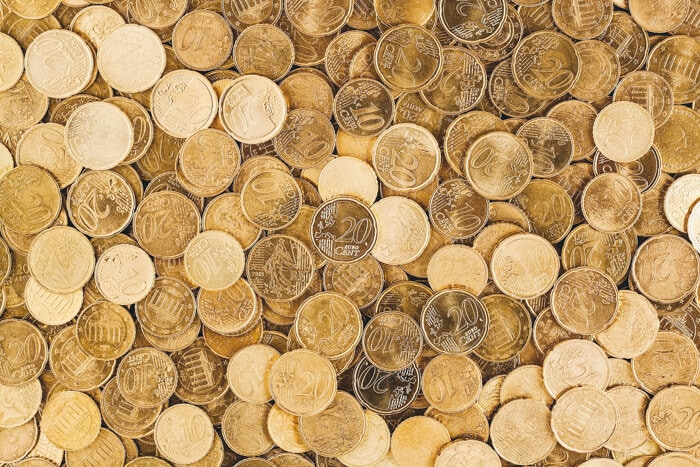
Debit and credit cards are the most common form of payment in Finland and widely accepted. Major credit cards accepted are Visa, MasterCard, and Maestro. There are plenty of ATM’s in Finland but most will charge a small fee. More and more shoppers have switched to cards in Finland, with fewer people carrying cash. The only cash you may need is if you’re getting the bus or driving, as not all petrol stations accept cards.
Calling abroad, WiFi and data use in Finland
If you have a SIM card from an EU country, you don’t have to pay roaming charges when calling, texting, or using data in Finland. The same goes for some global phone plans catering to frequent travelers.
If you don’t have a EU SIM but still want to have unlimited WiFi, check out Solis Wifi.
Skyroam offers both day passes and monthly subscriptions providing you with 4G on your trips. I’ve been using their daily passes not just when I travel outside the EU (no roaming charges for me in the EU) but also as a backup for when I think I’ll go over my phone’s data plan.
Check out Solis Wifi here.
Tipping in Finland
Tipping isn’t very customary in Finland and staff usually don’t expect a tip. What does happen, is that the bill is just round up. Good to know is that it’s illegal to tip staff of government-owned institutions like some museums. Read more on tipping in Finland here.
A brief history of Finland
The first humans arrived in Finland around 9,000 BC after the end of the last ice age. The earliest Finns were stone-age hunters and gatherers. The first recorded history of Finland began in the 12th century. In 1155, the first missionaries arrived in Finland from Sweden, becoming part of the Swedish realm. In 1322, Swedish colonists migrated to Finland in large numbers and after 1323 Finland became a province of Sweden.
Between 1696-97, Finland was devastated by a severe famine. The malnutrition and disease led to a reduction of about a third of the population. In 1710, the country was hit again when the plague reached Helsinki, eating through the population. In 1809, Finland finally detached from Sweden.
The twentieth century saw the women of Finland receive the vote. The country declared independence from Russia on December 6, 1917. The Winter War was fought during 1939-1940 when the Soviet Union attacked Finland. Throughout the 1900s, Finland joined the United Nations and the European Union. In modern day times, Finland was briefly the only country in Europe to have a woman as both prime minister and president. Finland consistently ranks highly in quality of life and happiness indexes with a booming technology sector and growing tourism industry.
Posts about Finland
Click here for all the posts I’ve written about Finland.
PIN FOR LATER
This page contains affiliate links. If you buy or book anything through these links, I earn a small commission at no extra cost to you.

